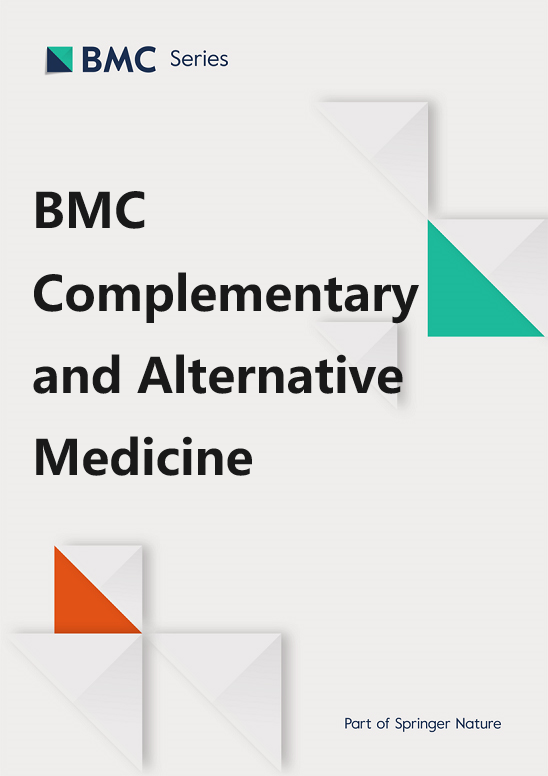Isolation and anti-neuroinflammation activity of sesquiterpenoids from Artemisia argyi: computational simulation and experimental verification
IF 3.4
2区 医学
Q1 Medicine
引用次数: 0
Abstract
Artemisia argyi is a traditional herbal medicine belonging to the genus Artemisia that plays an important role in suppressing inflammation. However, the chemical constituents and underlying mechanisms of its therapeutic potential in neuroinflammation are still incompletely understood, and warrant further investigation. Several column chromatography were employed to isolate and purify chemical constituents from Artemisia argyi, and modern spectroscopy techniques were used to elucidate their chemical structures. The screening of monomeric compounds with nitric oxide inhibition led to the identification of the most effective bioactive compound, which was subsequently confirmed for its anti-inflammatory capability through qRT‒PCR. Predictions of compound-target interactions were made using the PharmMapper webserver and the TargetNet database, and an integrative protein-protein interaction network was constructed by intersecting the predicted targets with neuroinflammation-related targets. Topological analysis was performed to identify core targets, and molecular docking and molecular dynamics simulations were utilized to validate the findings. The result of the molecular simulations was experimentally validated through drug affinity responsive target stability (DARTS) and Western blot experiments. Seventeen sesquiterpenoids, including fifteen known sesquiterpenoids and two newly discovered guaiane-type sesquiterpenoids (argyinolide S and argyinolide T) were isolated from Artemisia argyi. Bioactivity screening revealed that argyinolide S (AS) possessed the most potent anti-inflammatory activity. However, argyinolide T (AT) showed weak anti-inflammatory activity, so AS was the target compound for further study. AS may regulate neuroinflammation through its modulation of eleven core targets: protein kinase B 1 (AKT1), epidermal growth factor receptor (EGFR), proto-oncogene tyrosine-protein Kinase (FYN), Janus Kinase (JAK) 1, mitogen-activated protein (MAP) Kinase 1,8 and 14, matrix metalloproteinase 9 (MMP9), ras-related C3 botulinum toxin substrate 1 (RAC1), nuclear factor kappa-B p65 (RELA), and retinoid X receptor alpha (RXRA). Molecular dynamics simulations and DARTS experiments confirmed the stable binding of AS to JAK1, and Western blot experiments demonstrated the ability of AS to inhibit the phosphorylation of downstream Signal transducer and activator of transcription 3 (STAT3) mediated by JAK1. The sesquiterpenoid compounds isolated from Artemisia argyi, exhibit significant inhibitory effects on inflammation in C57BL/6 murine microglia cells (BV-2). Among these compounds, AS, a newly discovered guaiane-type sesquiterpenoid in Artemisia argyi, has been demonstrated to effectively inhibit the occurrence of neuroinflammation by targeting JAK1.艾蒿倍半萜化合物的分离和抗神经发炎活性:计算模拟和实验验证
青蒿是属于蒿属的一种传统草药,在抑制炎症方面发挥着重要作用。然而,人们对其化学成分及其治疗神经炎症的潜在机制仍不甚了解,有待进一步研究。研究人员采用多种柱层析方法从青蒿中分离和纯化化学成分,并利用现代光谱技术阐明其化学结构。通过筛选具有一氧化氮抑制作用的单体化合物,确定了最有效的生物活性化合物,随后通过 qRT-PCR 验证了其抗炎能力。利用PharmMapper网络服务器和TargetNet数据库对化合物与靶点的相互作用进行了预测,并通过将预测的靶点与神经炎症相关靶点相交,构建了一个整合的蛋白质-蛋白质相互作用网络。通过拓扑分析确定了核心靶点,并利用分子对接和分子动力学模拟验证了研究结果。分子模拟的结果通过药物亲和力反应靶点稳定性(DARTS)和 Western 印迹实验进行了实验验证。从青蒿中分离出17个倍半萜类化合物,包括15个已知倍半萜类化合物和两个新发现的愈创木型倍半萜类化合物(argyinolide S和argyinolide T)。生物活性筛选显示,阿基内酯 S(AS)具有最强的抗炎活性。然而,青蒿内酯 T(AT)的抗炎活性较弱,因此 AS 成为进一步研究的目标化合物。AS可能通过调节11个核心靶点来调节神经炎症:蛋白激酶 B 1 (AKT1)、表皮生长因子受体 (EGFR)、原癌基因酪氨酸蛋白激酶 (FYN)、Janus 激酶 (JAK) 1、丝裂原活化蛋白 (MAP) 激酶 1、8 和 14、基质金属蛋白酶 9 (MMP9)、ras 相关 C3 肉毒毒素底物 1 (RAC1)、核因子 kappa-B p65 (RELA) 和视黄醇 X 受体 alpha (RXRA)。分子动力学模拟和 DARTS 实验证实了 AS 与 JAK1 的稳定结合,而 Western 印迹实验则证明 AS 能够抑制由 JAK1 介导的下游信号转导子和转录激活子 3(STAT3)的磷酸化。从艾蒿中分离出的倍半萜化合物对 C57BL/6 小鼠小胶质细胞(BV-2)的炎症有显著的抑制作用。在这些化合物中,青蒿中新发现的瓜蒌类倍半萜化合物 AS 被证明能通过靶向 JAK1 有效抑制神经炎症的发生。
本文章由计算机程序翻译,如有差异,请以英文原文为准。
求助全文
约1分钟内获得全文
求助全文
来源期刊

BMC Complementary and Alternative Medicine
INTEGRATIVE & COMPLEMENTARY MEDICINE-
CiteScore
7.00
自引率
0.00%
发文量
0
审稿时长
3 months
期刊介绍:
BMC Complementary Medicine and Therapies is an open access journal publishing original peer-reviewed research articles on interventions and resources that complement or replace conventional therapies, with a specific emphasis on research that explores the biological mechanisms of action, as well as their efficacy, safety, costs, patterns of use and/or implementation.
 求助内容:
求助内容: 应助结果提醒方式:
应助结果提醒方式:


